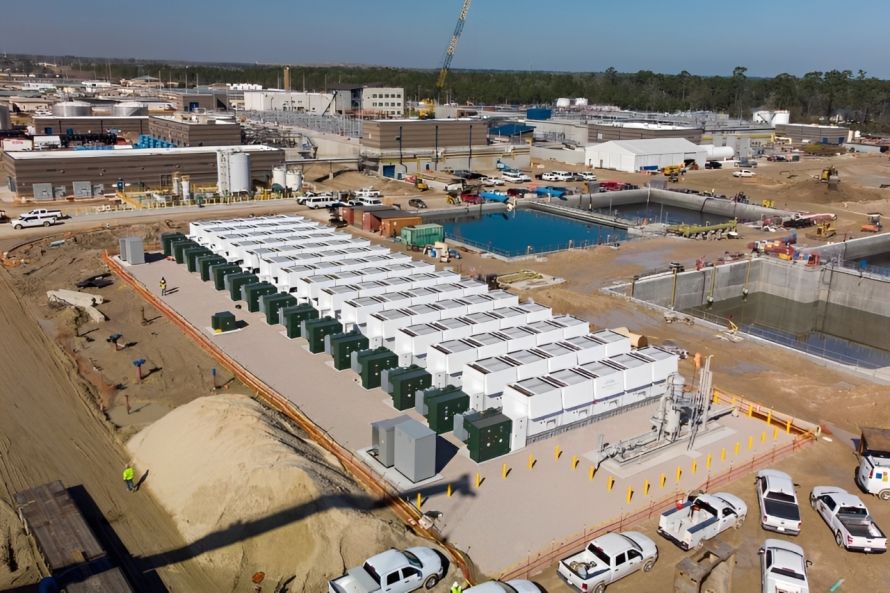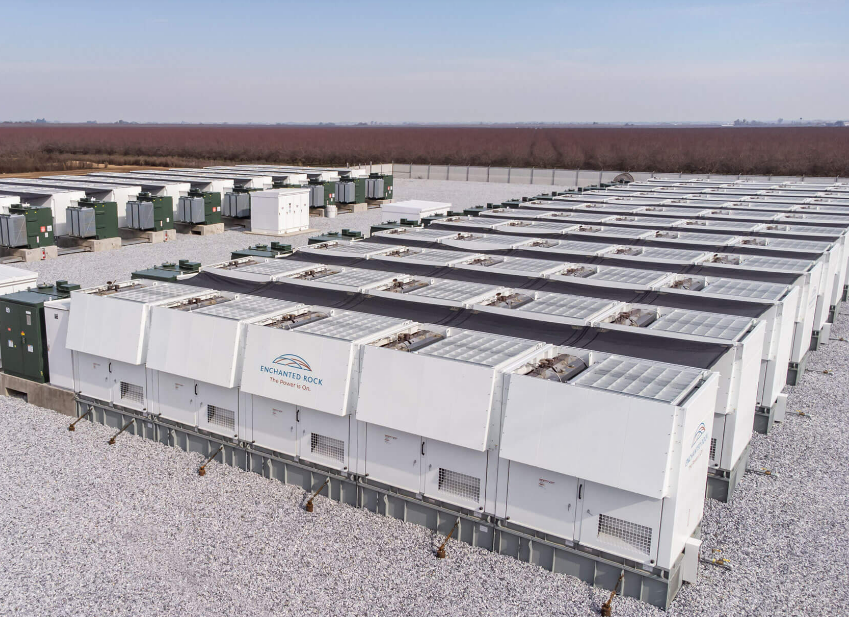There is a new sheriff in the White House, and with his administration embracing the oil and gas industry, excitement and relief has permeated throughout. Although the doors of possibility have now opened upon a gleaming prospect of four prosperous years ahead, certain of the industry’s lingering challenges will need solutions if growth is to continue. The Permian Basin is a hotbed of activity, always answering a relentless demand for output, and as experts look ahead, the infrastructure needed to accommodate surging output comes squarely into focus.
Now that the United States can anticipate a spectrum of opportunities to increase production under the Trump administration, operators must weigh the prospects of a lack of infrastructure, particularly electrical power infrastructure, in remote areas of the Permian Basin. With the call for energy dominance and a push for greater exports of liquefied natural gas (LNG), the timing is paramount to close an electricity gap that has only been growing over the last decade.
Besides the need for more juice to drive drilling activity (yes, I’m talking about electricity powered drilling rigs), electrification of completion, production, compression, and transport operations is also growing the increasing power demand in the region. Experts are scrambling to determine how to deliver that power. If we were to compare this campaign with a road map, then transmission lines would be the highways that control the overall flow and activity.
Supply through Transmission Lines
Kevin Kang
When analyzing the power demand of the oil and gas sector, a closer look at electricity buildouts and how they track with both current demand and perceived future growth can be telling. Enverus is an information technology company that provides analytics, insights, and technology to the oil and gas industry. Kevin Kang, senior associate, currently leads the firm’s long-term power demand forecasting efforts. He says the Permian Basin region has seen a couple of gigawatts of average growth. However, according to the Permian Basin Reliability Study developed by the Electric Reliability Council of Texas (ERCOT), only about one-third of power demand projected for the Permian Basin by 2032 is actually being met by the grid today. While recent operational growth has exacerbated this delta, a lack of service didn’t just spring up overnight, but has been a growing problem that is reaching a breaking point.
Those limitations might appear to be overwhelming to many, but solutions are needed if production is going to continue to grow in the country’s most prolific producing basin. Even with a production history that reaches back more than 100 years, excessive growth has prevailed over the past five years in the Permian Basin. Add to that growth that natural gas combustion compressors are additional equipment that is grid-connected, and that their replacements come with electric or hybrid motors that draw much more power on the grid, and that overwhelming feeling might grow.
“These are a long-standing kind of 20-year-plus assets,” says Kang. “Once you replace one, you’re going to have that load all the time and continuously grow. Demand needs to be met here.”
When you don’t have power generation close to the demand, the grid uses transmission lines to get the electricity where it needs to go. However, the shortage of adequate of transmission lines capacity out to the Permian Basin has resulted in a persistent challenge. Kang says the ones that are in place pose challenges of their own.
“The transmission lines we do have are congested to a point,” says Kang. That’s because the way electricity flows in Texas is, honestly, left to right,” he said. Much of the electricity that is generated locally in the Permian Basin actually moves on the transmission lines that are in place to the major metropolitan areas of the state. Those wind turbines you see are generating electricity that goes to Dallas and Houston.
But that’s changing. “Now you are seeing less exporting due to their needing to retain their own demand and meet that demand for their assets on site.”
To offset this and meet all demands, Kang feels transmission line infrastructure is key. The challenge of development time, along with capital investment, could hinder progress in this area, however.
“We don’t have a really developed grid in the [Permian] area that has enough electricity to supply any further increases in demand, especially in the short term,” says Kang. “So, there have been a lot of investments in, you know, natural gas. But that requires [developing] the natural gas infrastructure, the pipelines, and trying to build a lot of solar out there.”
According to Kang, a contributing factor to this lack of transmission infrastructure is the power market’s inability to evolve in the last decade (or decades), and now, a fundamental change is needed. Kang says that with ERCOT being the regulating entity, the organization has continued to align itself with planning publicized in mid-2024.
“They are standing by their regional transmission planning document,” says Kang. “They estimated the expected demand at 80 gigawatts of average load, but by 2030 there is an expectation of 150 peak load.”
He adds, “So that is five years ahead, and they are investing in a bunch of transmission infrastructure so they can meet the 2030 demand, but the story is also kind of funding/policy related.”
Kang has reviewed and analyzed the ERCOT document and finds the group does not make allowances for any large assets delaying their step of coming online. While it might seem natural to assume all will come online, past experience paints a different picture. History indicates that less than 20 percent of projects actually do come online, due to changing economics. Only the more optimal projects come to fruition, whereas ERCOT takes measurements based on a 100 percent project completion rate.
Transmission Line Twists

Stephen Robertson
Project size and completion rate deserve consideration when one projects transmission line solutions, but nothing comes easily. While the need for new and additional transmission lines appears to dictate a campaign to bring electricity to the Permian’s remote areas, the actual carrying out of such a campaign will not be simple.
According to Stephen Robertson, Executive Vice President of the Permian Basin Petroleum Association (PBPA), with local generation not able to satisfy the growing power demand, new transmission lines are critical in electrifying the Permian Basin. However, the projects to design and construct these new supply arteries of electricity are potentially becoming a political football as ERCOT maneuvers to make last-minute changes from what was originally proposed to what is now being pushed as preferred solutions.
The Texas Legislature previously directed ERCOT to develop the Permian Basin Reliability Plan, which focuses on bringing electricity to West Texas and includes the construction of transmission lines. As a reminder, ERCOT does not have the authority to dictate power generation growth, but does have the authority to facilitate transmission buildout.
“They developed the plan, and it has been approved; however, originally, the plan called for five different 345-kV transmission lines to get electricity out to West Texas,” says Robertson. “At the same time, certain voices at ERCOT said we, as a state, should jump to a 765-kV system. In addition to new lines for West Texas this would also mean lines for other parts of Texas and the utilization of innovative technology we have never used before in the state.”
To meet rising demand and existing congestion within the grid, ERCOT sees an upgrade in design capacity as a long-term solution, but this has yet to be approved. Robertson argues that this issue only furthers the crippling delays plaguing progress.
“We are concerned as a trade organization about that plan not because we are opposed to 765 lines, but because we are opposed to continued delay,” says Robertson. “It involves new technology that has never been tested in the state, and we prefer not to be the guinea pig. We needed the power yesterday, and the grid still haven’t gotten it to us yet. Working out the kinks of new systems could delay that delivery further.”
According to Robertson, the Texas Legislature has met and heard multiple transmission design and deployment perspectives. While final decisions are expected in the spring of this year, every day poles aren’t going into the growth to increase transmission to the Permian Basin, whether those be 345-kV lines or 765-kV lines, growth in oil and natural gas production suffers.
While additional transmission lines are the agreed-upon solution to bringing power to the Permian Basin, delays in getting that power have inspired companies to seek alternate solutions. Although some companies can build out and prepare for transmission line hookups, they still suffer delays. As a result, some are finding other ways to create and use electricity.
“Just because the grid isn’t providing the electricity people need doesn’t mean they aren’t finding alternative ways to get it,” says Robertson. “It isn’t the solution they prefer, but it will work in the short term.”

Enchanted Rock’s 30-megawatt microgrid at the Northeast Water Purification Plant in Houston. Source: Enchanted Rock
Microgrids to the Rescue

Allan Schurr
Permian Basin operators have been forced to seek out alternative solutions to deal with the shortage, with microgrids being the more popular option. Microgrids are small-scale electric systems that operate independently or in conjunction with the main power grid. Because they can generate, distribute, and regulate their own electricity, microgrids are known for providing power in remote geographic areas.
According to Chief Commercial Officer Allan Schurr of Enchanted Rock, a microgrid provider, natural gas microgrid installations have been deployed across seven customer locations in the Permian Basin region. While Texas has expanded its generation capacity by becoming the number one wind-producing state, it has meanwhile increased solar production. Schurr says that these power sources, however, are intermittent in their nature. Other sources are needed to fill gaps in grid shortfalls.
“When demand is high, or when the sun isn’t shining, and the wind slows down, our microgrids provide power back to the grid,” says Schurr. “The localized, reliable power that these dual-purpose microgrids generate ensures that critical facilities continue operating during outages without disruption and help to maintain grid stability and reduce the risk of supply shortfalls.”
Given the state of the electrical grid, the industry’s call to electrify oil and gas operations has proven difficult to accomplish fully. Schurr points to natural gas microgrids as critical components in electrifying the oil and gas sector. With their ability to generate utility-grade dispatchable power, they provide a path for oil and gas operations to transition fossil-fueled equipment to electric solutions without compromising reliability.
“Natural gas microgrids also help balance the grid while enabling businesses to efficiently scale their electrification efforts,” says Schurr.
Weighing the Prospects
Kang points to unification and a commitment to working together to ensure the demand is met. The oil and gas industry will have to partner with ERCOT to ensure the infrastructure is developed to meet the growing demand, but the transmission line design debate must be settled once and for all.
Companies will have to invest partially in their own power-generating abilities. Renewable targets could suffer, depending on whether they build solar on-site or behind the meter. Still, the goal is to satisfy the growing electricity demand in the Permian Basin region, by whatever means available. In such circumstances, a partnership in economic investment will likely carry infrastructure development to the finish line.

Another Enchanted Rock Microgrid
Nick Vaccaro, owner of Vaccaro Group LLC, services the energy industry as an HSE consultant and freelance writer. A contributor to numerous industry publications, Vaccaro holds a BA in photojournalism from Loyola University. He can be contacted at 985-966-0957 or [email protected].
The post Electrifying the Permian appeared first on Permian Basin Oil and Gas Magazine.
pboilandgasmagazine.com (Article Sourced Website)
#Electrifying #Permian
